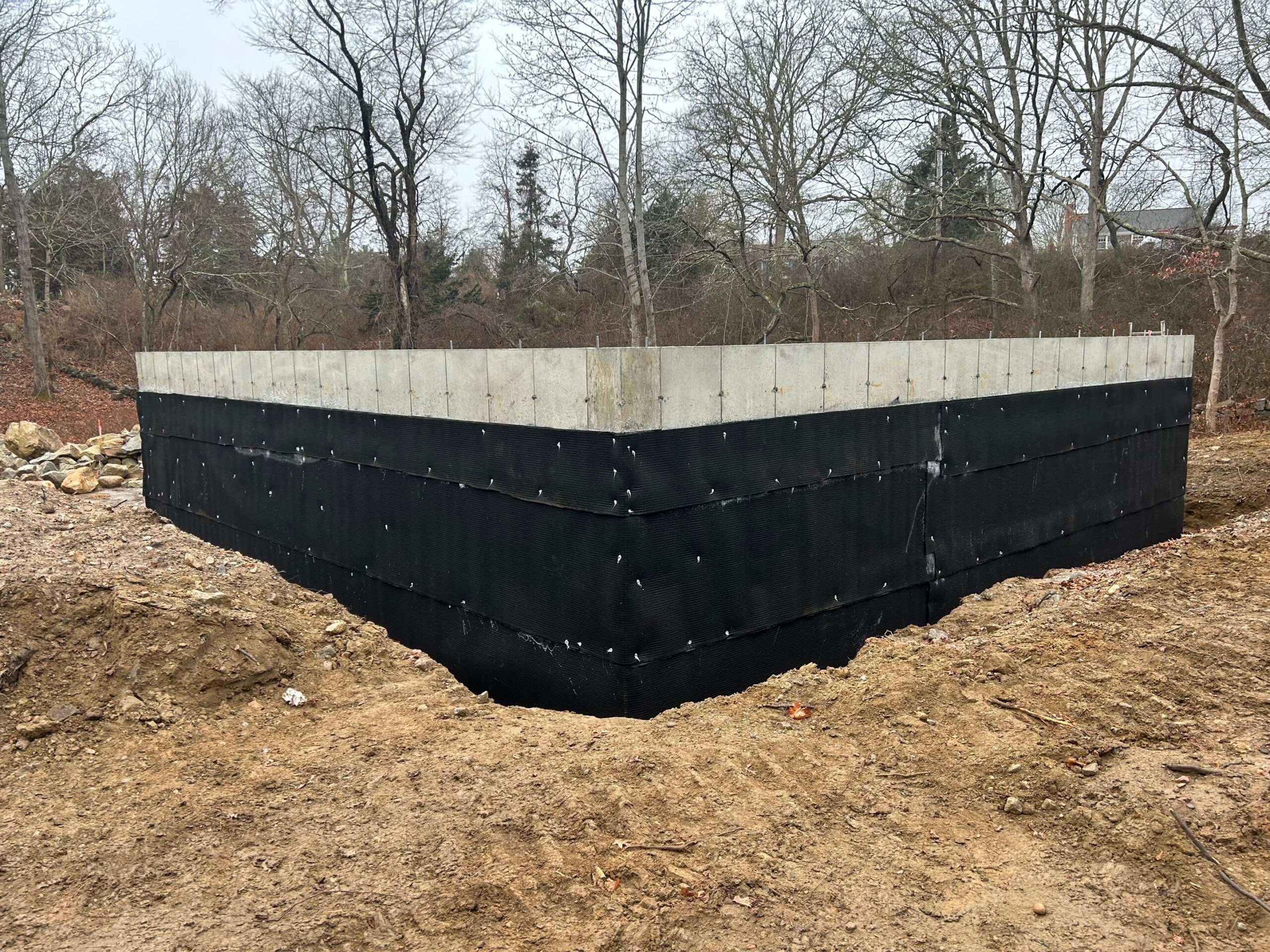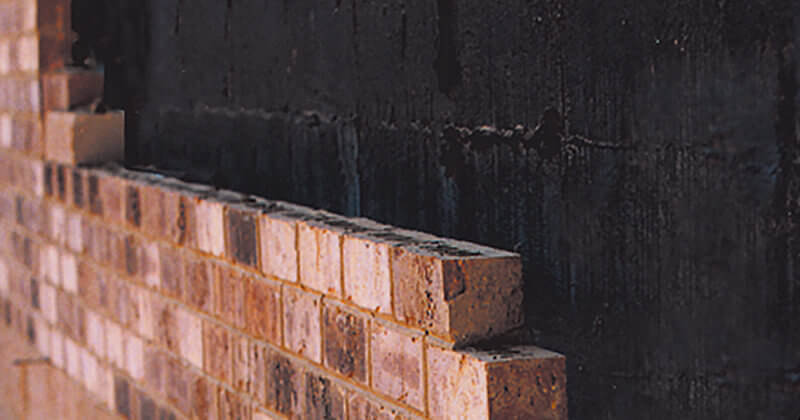Discovering the Various Methods and Solutions for Effective Damp Proofing
Dampness in buildings presents significant difficulties to both structural stability and interior air top quality. Numerous methods and remedies have actually emerged to combat this pervasive issue. From standard damp-proof membrane layers to cutting-edge chemical therapies, each approach uses distinct benefits. Recognizing these options is crucial for reliable dampness control. Nevertheless, selecting the best service relies on certain structure problems and requirements, motivating additional exploration right into the most reliable moist proofing methods offered.
Recognizing the Root Causes Of Wetness
Dampness can emerge from numerous sources, recognizing these causes is important for reliable remediation. Frequently, dampness originates from 3 primary sources: climbing moist, penetrating moist, and condensation. Increasing damp occurs when groundwater travels up-wards with porous products, such as block or rock, commonly because of an absence of a reliable obstacle (damp proofing newcastle). Passing through wet is generally brought on by outside variables, consisting of roof leaks, damaged gutters, or harmed walls, enabling water to penetrate a residential property. Condensation, on the various other hand, arises from excess dampness airborne, usually exacerbated by poor ventilation and temperature differences, leading to water droplets basing on surfaces. Identifying these underlying problems is vital, as each kind of wetness calls for a customized technique for removal. Appropriate analysis helps in figuring out one of the most effective remedies, inevitably guarding the structural honesty of a building and enhancing interior air high quality
Standard Damp-Proof Membranes

Chemical Damp-Proofing Solutions
Chemical damp-proofing services supply a cutting-edge approach to stopping dampness invasion in buildings. These methods usually involve the application of liquid chemicals that permeate masonry and create an obstacle against rising wet. Generally utilized chemicals include silanes, siloxanes, and various other water-repellent representatives that respond with surface area products to develop a hydrophobic layer.The application process usually calls for exploration holes into the walls, injecting the chemical remedy, and permitting it to cure. This method is especially beneficial for older frameworks where standard damp-proof membranes may be impractical. Additionally, chemical damp-proofing can be much less turbulent and more economical than comprehensive improvement projects.While effective, these options depend upon correct application and ecological problems for peak performance. Regular upkeep and monitoring are important to guarantee the durability of the damp-proofing treatment. In general, chemical damp-proofing represents a versatile option for guarding structures versus moisture-related damage
Cavity Wall Surface Building Strategies
Dental caries wall surface building methods offer numerous advantages, specifically in moisture control and power performance. By integrating an air void between two layers of masonry, these walls effectively alleviate water access while enhancing insulation. This combination not just protects structures from wetness however also adds to lowered energy intake.
Benefits of Cavity Walls
When thinking about reliable moist proofing approaches, the benefits of tooth cavity wall surfaces stand apart plainly. Tooth cavity wall surfaces include 2 different layers, creating an air space that properly decreases wetness infiltration. This design reduces the threat of dampness, as the outer wall functions as an obstacle against rainfall and water ingress. Furthermore, dental caries walls boost thermal insulation, which adds to power performance by lowering warmth loss. They additionally supply audio insulation, assisting to create a quieter indoor environment. Moreover, the air gap enables ventilation, which aids in dampness control and lowers the chance of mold and mildew development. These advantages not only improve the overall convenience of a building but additionally add to its durability and architectural integrity.
Moisture Control Approaches
Effective dampness control strategies are critical in tooth cavity wall surface construction to assure long-term security against moisture. One key method includes the unification of weep openings, which facilitate water drainage from the tooth cavity, stopping buildup. Additionally, using breathable membranes can assist handle wetness degrees while enabling entraped vapor to run away. Proper placement of insulation is also important, as it needs to not block water drainage courses. Making certain that the outer leaves of the tooth cavity wall surface are constructed with water-resistant materials boosts total durability. Regular maintenance checks are necessary to identify any type of blockages or damages early, safeguarding the structure's integrity. Eventually, a combination of these methods creates a robust defense versus wetness intrusion in dental caries walls.
Insulation and Energy Performance
Insulation plays an essential function in enhancing energy performance within tooth cavity wall construction. By including shielding materials, these walls develop a thermal obstacle that reduces heat loss and reduces power intake. Effective insulation not just aids preserve a stable indoor temperature but additionally minimizes the risk of moisture, as it stops condensation within the wall cavity. Numerous strategies, such as using inflexible foam boards or mineral woollen, can be utilized to accomplish suitable insulation performance. Furthermore, appropriate installation is vital to assure that spaces and gaps are reduced, which can or else endanger energy effectiveness. Inevitably, a well-insulated cavity wall surface adds significantly to total sustainability and lowers home heating and air conditioning costs for property owners.
Exterior Damp Proofing Techniques
Exterior damp proofing methods are necessary for protecting structures from wetness seepage. 2 efficient strategies consist of the application of Recommended Reading water resistant membrane layers and the installment of French drains pipes. These solutions help alleviate water accumulation and preserve the integrity of buildings.
Waterproof Membrane Application
While various methods exist for avoiding wetness ingress, the application of water resistant membranes stays an extremely efficient exterior damp proofing technique. These membranes are usually made from products such as polyethylene, rubber, or changed bitumen, providing a robust obstacle against water infiltration. The installment procedure involves applying the membrane layer to the outside surface areas of foundations or walls, making certain complete protection to prevent leakages. Correct bond and securing at joints are important to making best use of effectiveness. Waterproof membrane layers can be used in different forms, including fluid layers and sheet membrane layers, allowing for flexibility based on the particular demands of the structure. This method not just safeguards buildings from dampness however also improves their long life and structural honesty.
French Drain Installment
One reliable approach for managing groundwater and protecting against wetness buildup around a building's foundation is the setup of a French drain. This drain system is composed of a trench filled up with gravel and a perforated pipe that redirects surface water far from the foundation. Correct setup calls for mindful planning, ensuring that the drain slopes away from the framework to help with perfect water flow. Additionally, the location of the drainpipe is crucial; it should be placed in locations susceptible to pooling or excess wetness. Routine maintenance, consisting of cleaning particles from the crushed rock and making sure the pipeline remains unobstructed, is crucial for long-lasting effectiveness. Eventually, a well-installed French drainpipe can significantly minimize the danger of water-related concerns in foundations and basements.
Inside Waterproofing Approaches
Inside waterproofing approaches are vital for securing a building's inside from wetness infiltration and potential water damage. These methods typically include the application of specific products and strategies designed to create a wetness obstacle within the structure. One usual technique is using waterproof finishes or sealants on walls and floorings, which prevent dampness from you could check here permeating surfaces.Additionally, installing interior drainage systems, such as sump pumps, can successfully handle water accumulation in basements and creep rooms. Another approach involves using vapor obstacles, which are installed to hinder wetness movement from the ground into living spaces.Moreover, resolving any type of cracks or spaces in walls or structures with proper sealers guarantees a complete protection versus water intrusion. By carrying out these indoor waterproofing techniques, property proprietors can greatly reduce the threat of mold and mildew growth, architectural damages, and various other moisture-related issues. Proper execution of these methods is crucial for long-term security and structure stability.
Normal Maintenance and Assessment Practices
Routine upkeep and examination practices are essential for ensuring the long-lasting efficiency of damp proofing services in any building. Routine checks enable property proprietors to recognize early signs of dampness invasion, such as peeling paint, mold development, and stuffy smells. These indications can signal underlying issues that call for instant attention.Inspections should be conducted at least annually, concentrating on susceptible locations like cellars, crawl spaces, and exterior walls. Throughout these analyses, homeowner should examine sealers, drainage systems, and ventilation to verify they function correctly.Additionally, maintaining seamless gutters and downspouts is essential, as clogged systems can lead to water accumulation near the foundation. Executing a routine maintenance routine, together with timely repairs, can considerably extend the lifespan of damp proofing steps and safeguard the structural integrity of the structure. Positive procedures inevitably contribute to the overall health and wellness of the living atmosphere.
Regularly Asked Questions
How Much Time Does Damp Proofing Typically Last?
The duration of moist proofing performance differs, typically lasting between 20 to 50 years. Variables such as application quality, ecological conditions, and upkeep techniques substantially affect the long life of the moist proofing treatment.

Can I Damp Evidence My Home Myself?
The private considered the usefulness of do it yourself damp proofing. With appropriate study and the appropriate materials, it is feasible. However, they additionally acknowledged the relevance of professional guidance to ensure durable efficiency and avoid future concerns.
What Are the Signs of Inefficient Damp Proofing?
Indicators of inefficient wet proofing consist of persistent stuffy odors, noticeable mold and mildew development, peeling paint, moist patches on walls, and wood degeneration - mould treatment newcastle. Property owners you could try here must resolve these issues immediately to stop further damage and wellness concerns
Does Damp Proofing Affect Indoor Air High Quality?

Just How Much Does Expert Damp Proofing Price?
Professional damp proofing expenses vary considerably, commonly ranging from $1,000 to $5,000 relying on the property's dimension, the level of the wet concern, and picked approaches. Each scenario requires a customized analysis for exact prices. Frequently, dampness originates from 3 main sources: rising damp, passing through wet, and condensation. When taking into consideration efficient moist proofing methods, the advantages of cavity wall surfaces stand out plainly. External damp proofing approaches are essential for safeguarding structures from dampness seepage. While different methods exist for avoiding moisture access, the application of water resistant membranes remains a very efficient outside wet proofing method. Indications of inefficient damp proofing consist of consistent mildewy odors, visible mold growth, peeling off paint, wet patches on wall surfaces, and timber degeneration.